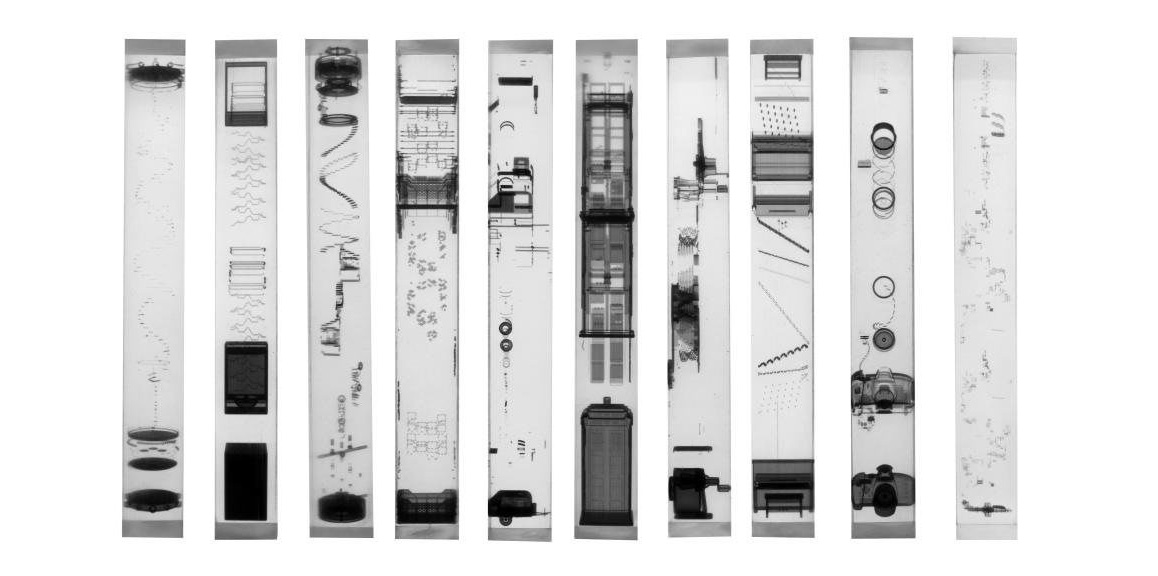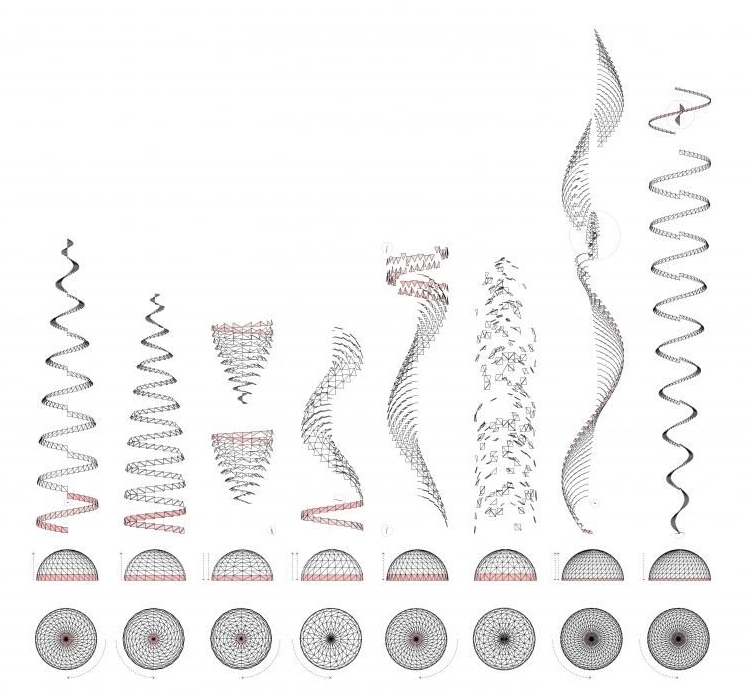Timelapse files
timelapse files¶

By manipulating the objects in a file to reflect the order in which the file’s elements are found in the internal index, we can create reifications of a file’s index. This process can be applied to 3D files to create “index models”. The file components can be stretched upwards like a scroll in virtual space to reveal the sequence in which the elements are stored in a file.
These index or time-lapse representations reveal different patterns which can be easily distinguished from one another. An analysis of files output from eight different software modeling programs (above) reveals a variety of strategies in the sequencing of the elements of a triangulated hemisphere. Some programs (Type A) construct a hemisphere as a spiraling surface (like an orange peel) while others (Type B) sequence this object as series of slices (like quarters of an orange). Programs of Type C appear to have no logical order in their triangle indices. Each index drawing represents a kind of fingerprint, or DNA code, stored in a file which identifies a particular sequencing priority (whether human or computer-derived).

“Index model” of triangles (first at the bottom, last at the top) describing hemispheres from files output by various 3D modeling programs.
By manipulating the objects in a file to reflect the order in which the file’s elements are found in the index, we can create visualizations, or reifications, of a file’s index. This process can be applied to 2D files, to produce “index drawings”, or to 3D files, to create “index models”. In both cases the file components can be stretched upwards like a scroll in virtual space to reveal the sequence in which the elements are stored in a file. These “index” representations reveal different patterns which can be easily distinguished from one another. An analysis of files output from eight different software modeling programs (above) reveals a variety of strategies in the sequencing of the elements of a triangulated hemisphere. Some programs (Type A) record a hemisphere as a spiraling surface (like an orange peel) while others (Type B) sequence this object as series of slices (like quarters of an orange). Programs of Type C appear to have no logical order in their triangle indices.The “index drawings” below reveal different priorities in the sequencing of drawing components. Each index drawing represents a kind of fingerprint, or DNA code, stored in a file which identifies a particular sequencing priority (whether human or computer-derived).
Read more here: https://www.marrs.io/autodesk-air/